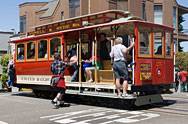Trolley and Box
Formerly known as the Railroad Hand Cart
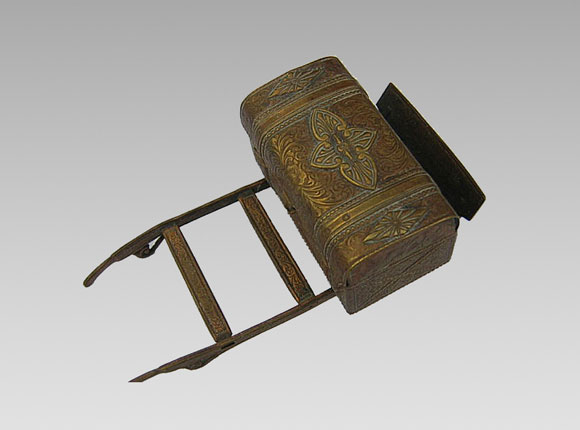
Needle Case
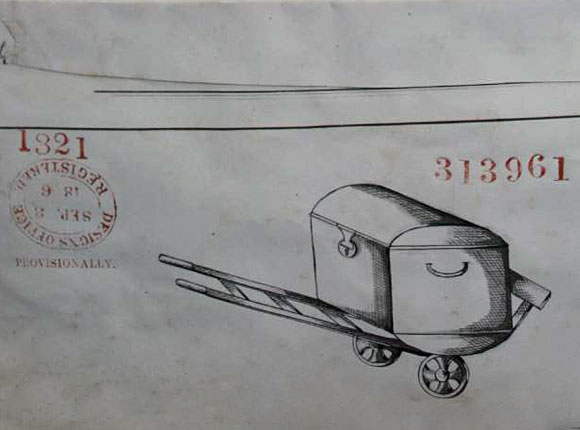
Design Representation
Design Details
Needle Case Type: |
Figural |
Patent/Registered to: |
Frank J. Kendrick – Birmingham |
Patent/Design Representation #: |
Ornamental Class1: Metal: #313961 (Provisional Design #1321 registered September 8, 1876 |
Patent/Design Registration Date: |
September 7, 1877 |
Location of Patent/Design Registration: |
The National Archives (TNA) - Kew, UK |
Reference #: |
TNA Representation - BT 43/42/313961
TNA Register - BT 44/4/313961 |
Dimensions: |
4.2 x 7.5 x 3.5
|
Material: |
Brass |
Name Variations: |
a) W. Avery & Son - Redditch
b) Baggallays, Westall & Spence - London (this needle case with this company name was sold online, however we do not have a
photograph of it.)
c) Sydney J. Saunders & Co - London |
Other Variations: |
None |
NOTE: The name of this needle case was changed because the Provisional Design register for item #1321 dated September 8, 1876
lists its subject as: "Trolley and box" receptacle for needles and pins.
Additional Photographs
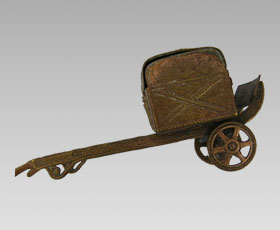
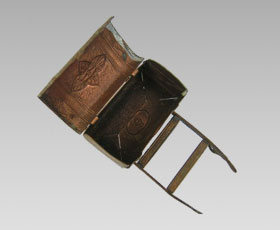
Side and interior views
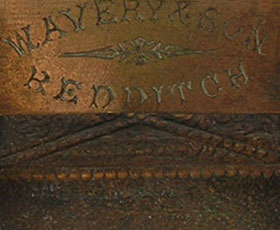
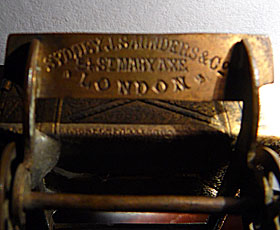
Bottom Avery signature detail and Saunders signature detail (photo from the Internet)
Facts
To the British a trolley is an L-shaped, two wheeled handcart used to move objects such as luggage. It has handles on one end and a small
ledge on the other where the article being transported can be positioned. After the object is place on the ledge, it is tilted backwards until
the weight is balanced over the wheels allowing it to be pushed forward. In the USA these are simply known as handcarts. Wheeled luggage
has replaced the need for most trolleys or handcarts at train stations and airports. Today handcarts are used primarily by the trucking
industry or in commercial establishments to deliver food and beverages or to move merchandise from a truck or stock room to the sales floor.
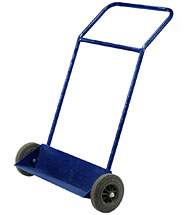
History
Carts of all types have been around for centuries, however the introduction of the railroad in the 19th century caused trolleys or railroad
handcarts to become more common. The rail system in Great Britain is the oldest in the world with its origins dating to the early 19th century
when the steam locomotive and wrought iron rails were invented. Starting in the early 1840’s dozens of private companies began competing and
within 10 years a complete network of rail lines was developed throughout the country. Rail transportation changed everything making it much
easier and faster for individuals to travel or merchandise to be moved from one area to another.
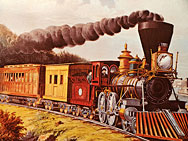
Miscellaneous
To Americans a trolley is an electric streetcar that moves along metal tracks in the streets of major cities and is used for public
transportation. San Francisco is renowned for its Victorian style trolleys and cable cars originally designed in the late 1800’s.
Click on the chromolithographic print below to see a larger picture of this early trolley.
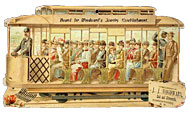
Cable cars are similar to trolleys except they operate by gripping a moving cable below the street which is driven by an electric motor in a
cental power house.
